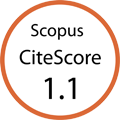| Journal of Medical Cases, ISSN 1923-4155 print, 1923-4163 online, Open Access |
| Article copyright, the authors; Journal compilation copyright, J Med Cases and Elmer Press Inc |
| Journal website http://www.journalmc.org |
Case Report
Volume 8, Number 12, December 2017, pages 375-377
Lethal but Reversible Encephalopathy Secondary to Lithium Toxicity: A Case Report and Review of Literature
Parthy Shaha, d, Dhaval Khalpadab, Dinesh Sangroulac, Samir Sarkarb
aFoundation of Mood Disorders Inc., Ronald R. Fieve-Columbia University, 952 5th Ave., Manhattan, NY 10075, USA
bDepartment of Medicine, Jamaica Hospital Medical Center, NY 8900 Van Wyck Expressway, Jamaica, NY 11418, USA
cDepartment of Psychiatry, Jamaica Hospital Medical Center, 8900 Van Wyck Expressway, Jamaica, NY 11418, USA
dCorresponding Author: Parthy Shah, Foundation of Mood Disorders Inc., Ronald R. Fieve-Columbia University, 952 5th Ave., Manhattan, NY 10075, USA
Manuscript submitted August 29, 2017, accepted October 13, 2017
Short title: Lethal Encephalopathy due to Lithium Toxicity
doi: https://doi.org/10.14740/jmc2932e
| Abstract | ▴Top |
Lithium has been the first line of drug for bipolar disorder since the 1970s and is also efficient in treating acute mania and major depression. Due to its narrow therapeutic window, the risk of toxicity remains a concern. Clinical manifestations include gastrointestinal, cardiac, renal symptoms, and, in chronic intoxication, development of neurological symptoms. Here we report a rare case of a severe, life-threatening lithium intoxication in a 43-year-old male who was unresponsive with a very high serum lithium level of 5.0 mEq/L. Additionally, we discuss clinical profile, diagnostic examination, and management.
Keywords: Lithium; Lithium toxicity; Encephalopathy; Hemodialysis
| Introduction | ▴Top |
To date, the biochemical mechanism of lithium remains unclear. Meltzer et al describe lithium as affecting two intracellular signaling pathways: inositol monophosphate and glycogen synthase kinase-3, which is probably the mechanism of action for mood stabilization [1].
Lithium is freely filtered through the kidneys since it is non-protein bound. Therefore, lithium must be monitored cautiously in people who have compromised renal function. Regardless, those who are on lithium must have monthly lithium blood levels. Although clinical symptoms are more reliable than serum lithium levels in determining any side effects or toxicity, the desired therapeutic serum lithium levels are 0.6 - 1.2 mEq/L [2]. Severe poisoning and death may occur when serum concentrations are higher than 3 - 4 mEq/L [3]. Before starting a patient on lithium, an ECG, blood urea nitrogen, serum creatinine, and serum electrolytes should be evaluated.
Lithium poisoning can present in a variety of ways, including nausea, vomiting, diarrhea, ataxia, confusion, neurological findings and renal failure. Nonetheless, the initial treatment is supportive care with a goal of stabilizing the patient. We report a case of a 43-year-old male who was recently prescribed lithium for bipolar disorder I and was admitted for altered mental status with decreased consciousness. This case highlights that severe lithium intoxication can be reversed with aggressive treatment.
| Case Report | ▴Top |
A 43-year-old Caucasian male, with history of bipolar disorder I, presented to the emergency room by ambulance in an unresponsive state. After being non-compliant with his therapy appointments, he was found in disarray by his case manager during a home visit. EMS was called and the patient was noted to be febrile (103 °F (39.4 °C)), hypotensive (BP of 90/60 mm Hg), tachycardic (124 bpm) with rapid shallow breathing (RR of 32/min), covered in vomitus, and only responsive to painful stimuli. The patient had no other significant past medical problems except for multiple hospitalizations for bipolar and schizoaffective disorders treated with lithium 450 mg twice daily for 3 weeks and chlorpromazine.
On physical examination, the patient was found to be somnolent, sedated and was intubated. His pupils were equal, round, and reactive to light. His heart, lung, abdomen and extremities were unremarkable. He scored 4 out of 15 on the Glasgow coma scale and had brisk reflexes. No tremor or myoclonus were present.
Initial labs revealed a severely high serum lithium level of 5.0 (therapeutic range 0.6 - 1.2 mEq/L), leukocytosis (16.3 × 109/L), elevated BUN (95 mg/dL), creatinine (5.6 mg/dL), CPK (1,426 µg/L) and lactic acid (2.5 mmol/L). Serum and urine toxicology were negative. ECG showed sinus tachycardia with prolonged QTc interval of 516 ms. CT of the brain was normal.
Hospital course
The patient was admitted to the ICU with lithium intoxication and acute renal failure with high anion gap metabolic acidosis and all his psychotropic medications were discontinued. He was treated with fluid replacement (isotonic saline), colonic decontamination with golytely and with two sessions of hemodialysis (HD). Lithium levels started trending down to 2.1 mEq/L (Fig. 1).
 Click for large image | Figure 1. Lithium trend (mEq/L). |
On day 4, the patient’s lithium levels normalized to 0.6 mEq/L and his renal function significantly improved (BUN of 25 and creatinine of 1.2). He continued to be febrile (102 - 103 °F (38.9 - 39.4 °C)) despite low levels of lithium and his mental status remained poor. These findings raised concern for meningitis. However, normal cerebrospinal fluid examination ruled out this possibility. Repeat urinalysis, urine culture, blood culture, sputum culture, and chest X-ray were all negative and the patient was started on broad spectrum antibiotics for persistent fever.
On day 6 of admission, the patient remained intubated due to his poor mental status. MRI of the brain without contrast and electroencephalogram (EEG) were ordered. The MRI of the brain was normal and EEG revealed “mild diffuse slow activity, with no epileptiform activity indicated mild diffuse cerebral dysfunction”, consistent with encephalopathy.
On day 7, the patient’s mental status slightly improved where he opened his eyes and followed simple commands. He was successfully extubated and his fever resolved. The patient was unable to move his extremities. To rule out the potential reasons for patient’s muscles weakness and fatigue, acetylcholine receptor modulating antibody (ACHR) test and aldolase were requested and were within normal limits.
The patient was transferred to the inpatient floor where he continued to show improvement in his mental status but developed pneumonia. He was started on paliperidone 3 mg daily and carbamazepine 200 mg thrice a day for his mood disorder. Ceftaroline and meropenem were added to his regimen for the hospital acquired pneumonia. Subsequently, once he was medically stable, the patient was safely discharged with mobile crisis and psychiatric outpatient follow-up appointments.
| Discussion | ▴Top |
Lithium poisoning can be classified as acute, acute-on chronic, and chronic, each with different manifestations. Acute lithium poisoning has manifestations that are predominantly gastrointestinal, but may progress to neurologic in nature. Acute-on-chronic has both gastrointestinal and neurologic manifestations. Chronic poisoning has manifestations that are primarily neurologic. Neurological symptoms include sluggishness, ataxia, confusion, and agitation and may be severe with seizures, non-convulsive status epilepticus, or encephalopathy [4].
This case reports a severe neurotoxicity, which is defined as lithium level of more than 3.5 mEq/L [3]. Our patient accidently overdosed his lithium and denied this as a suicide attempt. With no prior history of lithium use, he was prescribed 900 mg of lithium per day for the past 3 weeks. A wide range of differential diagnoses were considered for our patient’s unresponsive condition. These include: hypoglycemia, hypoxia, electrolyte disorders, seizures, CVA, neuroleptic malignant syndrome (NMS), serotonin syndrome, non-convulsive status epilepticus, delirium, and withdrawal syndromes. Factors such as dehydration, his current medications, infection, and other medical conditions were also considered. Subsequently, the majority of the patient’s routine labs were within normal limits and the differential diagnoses were ruled out. Serotonin syndrome was not a possibility since he was not on any concomitant serotonergic medications. Although he had mild fever of 100.5 °F (38.1 °C) and decreased level of consciousness, he did not have clinical signs of NMS such as muscular rigidity or autonomic instability. Thus, our diagnosis was narrowed down to lithium-induced neurotoxicity.
To further investigate the neurotoxicity, EEG was done revealing mild, diffuse slow activity, indicating cerebral dysfunction consistent with encephalopathy. Although the literature states EEG can show triphasic waves (TWs) with lithium toxicity, it is not absolutely needed for diagnoses [5]. Furthermore, these EEG findings eliminated the possibility of non-convulsive status epileptics as it would show EEG with ongoing rhythmic or epileptiform activity [5].
First line of approach in lithium toxicity is supportive care with a goal to stabilize the patient. Our patient was first stabilized with IV isotonic saline fluids, intubated for respiratory compromise, and hemodialyzed twice. As per hospital protocol, lithium levels were repeated every 2 - 4 h [6]. It is a common phenomenon for lithium levels to rebound after HD secondary to its diffusion from intracellular space to extracellular space [7]. Similarly, this patient’s serum lithium decreased after the first HD; however, it rebounded after a few hours, followed by decline after a second round of HD and colonic decontamination (Fig. 1).
After our patient’s lithium levels were normalized, he persisted to have altered state of consciousness and generalized weakness for 4 days. Hence, the syndrome of irreversible lithium effectuated neurotoxicity (SILENT) was considered. This is defined as persistence of neurologic complications (cerebellar dysfunction, extrapyramidal symptoms, brainstem dysfunction or dementia) despite lithium removal by HD [6]. Although our patient had none of the above specifically, there could be a mild questionable SILENT syndrome due to his generalized weakness and poor mental status post-lithium level normalization. Conversely, on day 10, the patient’s condition significantly improved and he was able to engage in conversation, follow commands, and move his extremities. After 20 days of admission, the patient’s condition improved and he was able to ambulate by himself.
Toxicity has been reported at therapeutic levels and insignificant clinical signs and symptoms at elevated levels [8]. Thus, as described by Nagappan et al, clinical symptoms do not necessarily correlate with the serum lithium concentrations. Furthermore, while HD is the basis of treatment for elevated lithium levels, the decision to initiate HD is determined based on clinical signs and symptoms, irrespective of lithium levels [3]. In our literature review, there are many reported lithium-associated reversible and irreversible encephalopathy with therapeutic lithium levels; however, this is a rare case of reversible lithium induced encephalopathy at a very high toxic level of 5.0 mEq/L.
Conclusion
Lithium, due to its pharmacokinetic properties, makes management of bipolar disorder challenging. Chronic lithium intoxication primarily has more neurotoxic effects, such as encephalopathy, as seen in our case. If not addressed assertively, impaired consciousness can lead to coma and death. Aggressive treatment with intravenous fluids and HD are warranted. It is imperative that all the patients are educated about lithium’s side effects, the significance of monthly serum lithium level monitoring, precipitating factors such as dehydration and other drug-drug interactions that primarily affect the kidney function.
Conflict of Interest
There is no conflict of interest.
Funding
No external funds were used for this research study.
| References | ▴Top |
- Meltzer H. Antipsychotic Agents & Lithium. In: Basic and Clinical Pharmacology, 11th ed, McGraw Hill, New York. 2009. p. 487.
- Lithium in neuropsychiatry: The comprehensive guide. Michael Bauer, Paul Grof and Bruno Muller-Oerlinghausen, CRC Press. 2006. p. 13.
- Lithium in neuropsychiatry: The comprehensive guide. Michael Bauer, Paul Grof and Bruno Muller-Oerlinghausen CRC Press. 2006. p. 491-499.
doi - Perrone J, Chatterjee P. Lithium Poisoning. 2016. UpToDate. Retrieved Jun 1, 2017 From https://www.uptodate.com/contents/lithium-poisoning.
- Haussmann R, Bauer M, von Bonin S, Grof P, Lewitzka U. Treatment of lithium intoxication: facing the need for evidence. Int J Bipolar Disord. 2015;3(1):23.
doi pubmed - Kaplan PW, Birbeck G. Lithium-induced confusional states: nonconvulsive status epilepticus or triphasic encephalopathy? Epilepsia. 2006;47(12):2071-2074.
doi pubmed - Bayliss G. Dialysis in the poisoned patient. Hemodial Int. 2010;14(2):158-167.
doi pubmed - Nagappan R, Parkin WG, Holdsworth SR. Acute lithium intoxication. Anaesth Intensive Care. 2002;30(1):90-92.
pubmed
This article is distributed under the terms of the Creative Commons Attribution Non-Commercial 4.0 International License, which permits unrestricted non-commercial use, distribution, and reproduction in any medium, provided the original work is properly cited.
Journal of Medical Cases is published by Elmer Press Inc.








